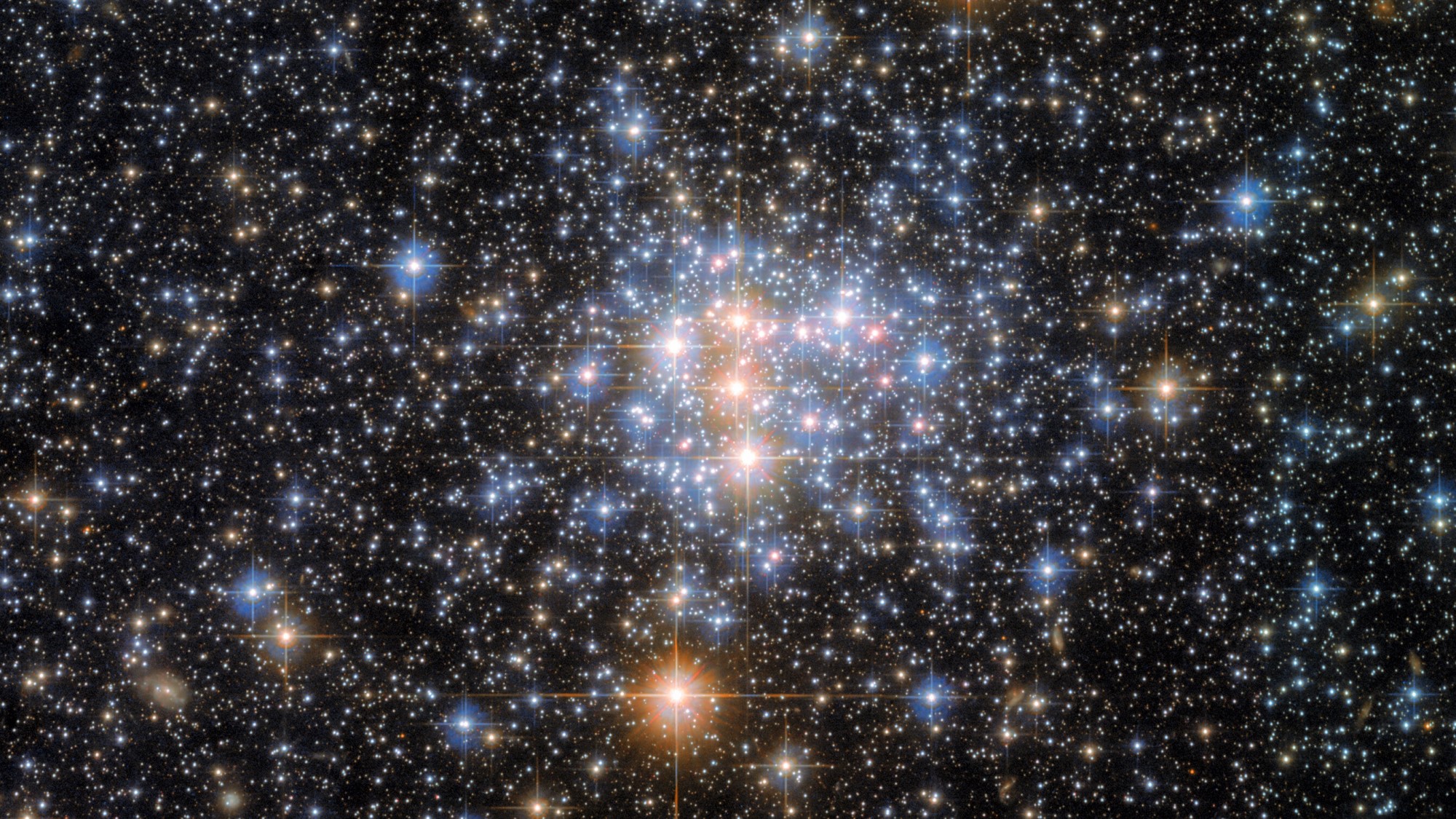Hubble Space Telescope captures exquisite view of nearby star cluster before it fades away
NGC 376 has already lost about 90% of its mass.

A dazzling new image from the Hubble Space Telescope captures a stunning view of a nearby open cluster of stars that is slowly dissolving into the dwarf galaxy around it.
The photo shows part of the Small Magellanic Cloud, a dwarf galaxy of the Milky Way that is just 200,000 light-years from Earth and the smaller partner of the slightly closer Large Magellanic Cloud, also a neighboring dwarf galaxy. Its proximity lets us observe it in such great detail that the Hubble Space Telescope can see a relatively tiny gathering of stars with remarkable clarity.
The new Hubble photo, which NASA and the European Space Agency released in December 2022, shows only a small portion of the Small Magellanic Cloud — an open cluster designated NGC 376. An open cluster is distinguished from a globular cluster by its more open, loosely bound structure, which allows us to identify individual stars even in its most tightly packed regions. Globular clusters, by contrast, are so dense that stars can be within a single light-year of each other and the light from the stars in their central regions blends together.
Related: The best Hubble Space Telescope images of all time!
Although the Small Magellanic Cloud contains hundreds of millions of stars, NGC 376 is only about 3,400 solar masses, so it is considerably less massive than the Small Magellanic Cloud itself. Located in the southern sky constellation Tucana, NGC 376 was first discovered in 1826 by Scottish astronomer James Dunlop.
According to a 2011 study in The Astrophysical Journal, NGC 376 has likely lost about 90% of its original stellar mass and is in the process of dissolving into the broader Small Magellanic Cloud. When that will happen isn't clear, but the slow loss of star-forming gas and the gravitational pull from the rest of the Small Magellanic Cloud make the process inevitable.
The Hubble image was produced using data from two investigations — one using Hubble's Advanced Camera for Surveys (ACS) and another employing both the ACS and Hubble's Wide Field Camera 3.
Get the Space.com Newsletter
Breaking space news, the latest updates on rocket launches, skywatching events and more!
Follow us on Twitter @Spacedotcom or on Facebook.
Join our Space Forums to keep talking space on the latest missions, night sky and more! And if you have a news tip, correction or comment, let us know at: community@space.com.
John is a science and technology journalist and Space.com contributor. He received his B.A. in English and his M.A. in Computer Science from the City University of New York, Brooklyn College, and has bylines with TechRadar, Live Science, GamesRadar, and other publications. You can find him on Bluesky at @johnloeffler.bsky.social or seeking out dark sky country for spectacular views of the cosmos.









